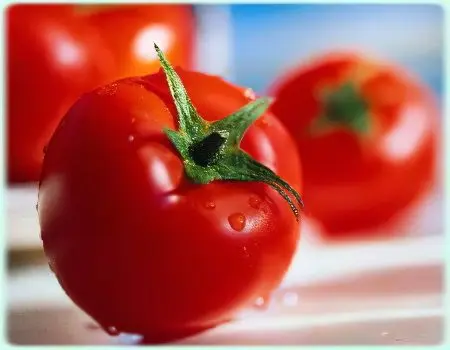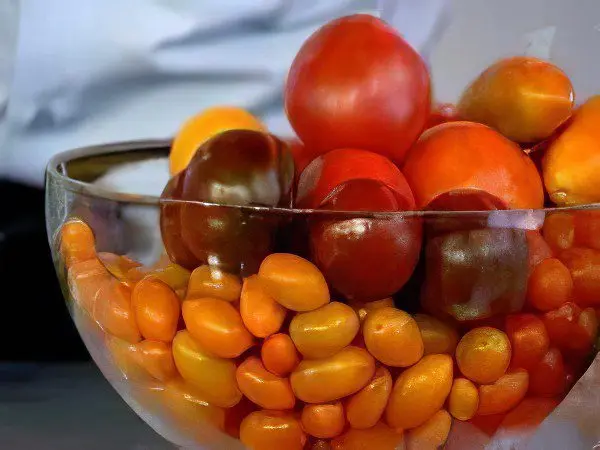Contents
What is lycopene?
Lycopene is a pigment that is red in color and breaks down fats. Found mainly in tomatoes. Lycopene belongs to a family of pigments called carotenoids. In turn, carotenoids are a natural pigment responsible for the bright color of autumn leaves, fresh flowers, fruits and vegetables. The color of vegetables and fruits ranges from bright yellow (some varieties of pumpkin), to orange (pumpkin and carrots), and red (tomatoes and peppers).
Lycopene is an antioxidant

Modern researchers have studied lycopene quite thoroughly. Lycopene has antioxidant properties. Numerous studies have shown that a diet that includes foods containing lycopene can reduce the risk of prostate cancer and cardiovascular disease.
Antioxidants fight free radicals that are produced when our cells convert oxygen into energy. Antioxidants can keep the immune system healthy, while reducing the risk of certain forms of cancer and other diseases. Vitamins such as vitamin C, E, beta-carotene and lycopene, and some other vitamins, are effective antioxidants.
In addition, the beneficial effects of antioxidants on heart disease have been observed. Recent studies have shown that men who had a high concentration of lycopene in their bodies had a 50% lower risk of a heart attack, compared to those who had low levels. As the researchers suggest, the content of lycopene in the body directly depends on its amount in the diet.
Properties of lycopene
Lycopene helps to normalize cholesterol metabolism, activates the process of digestion. Lycopene normalizes appetite, suppresses pathogenic intestinal microflora, prevents the development of atherosclerosis, maintains normal acid-base balance, promotes weight loss. It has antibacterial and antifungal properties, strengthens the walls of blood vessels and capillaries, has a beneficial effect on the skin of the face, nourishes and rejuvenates, especially dry, wrinkled and pigmented skin. As a prophylactic against various liver disorders.
Since lycopene is a powerful antioxidant, it is able to destroy free radicals – such reactive molecules that destroy cell membranes, attack DNA, and thereby cause various diseases. Studies have shown that patients with HIV infection, colds, and high cholesterol levels (with and without fat-lowering therapy) may have low blood levels of lycopene. The content of lycopene in the blood is not always reduced due to tobacco smoking and alcohol consumption, unlike other carotenoids. This is affected by the aging process.
Some studies have shown that a lycopene diet reduces the risk of a number of chronic diseases, such as cardiovascular disease, cancer, and age-related macular degeneration. As an antioxidant, lycopene prevents the oxidation of low-level lipoprotein, that is, bad cholesterol, which leads to atherosclerosis (reduced arterial patency) and coronary artery disease.
With an increase in the level of lycopene, the level of oxidized lipoprotein, protein and DNA components decreases, due to this, the risk of heart disease decreases. From this we can conclude that people with high levels of lycopene, the risk of heart disease is half that of people with low levels of lycopene. Again, there is a direct link between lycopene intake and a reduced risk of prostate and stomach cancer. In the notes on these diseases, lycopene was the only carotenoid that contributed to the reduction in the risk of such diseases.
If you eat tomatoes at least twice a week, you can reduce the risk of cancer by 34%. At least that’s what the Dana-Farber Cancer Institute says. Of the 46 fruits and vegetables in the study, only tomatoes were shown to reduce the risk of prostate cancer. In addition, there is some medical evidence that proves that regular intake of lycopene-rich tomatoes reduces the risk of gastrointestinal cancer.
Products containing lycopene

Since the human body itself does not produce lycopene, it must be administered with food.
Lycopene is found in foods such as:
Spaghetti Sauce
Tomato juice
Ketchup
pizza sauce
Record holders among vegetables and fruits in terms of lycopene content are:
Red tomatoes (one tomato contains an average of 1,5 mg of lycopene)
Watermelon
Red pepper
pink grapefruit
Any other red vegetables. Fruits also contain lycopene, but in smaller amounts.
Despite the fact that the main source of lycopene for humans is tomatoes or products made from them, the bioavailability of this enzyme is quite different. When preparing the sauce, the tomatoes are stewed in oil, while the absorption of lycopene increases, since this enzyme dissolves in fat. When tomatoes are heated, the chemical formula of lycopene changes into a different form, which is much easier for the body to digest. As one study showed, lycopene from tomato paste is absorbed 2,5 times faster than fresh vegetables.
Although there are no specific dietary recommendations, studies show that drinking two cups (approximately 540 ml) of tomato juice per day provides approximately 40 milligrams of lycopene. This amount is enough to significantly reduce the oxidation of bad cholesterol, according to studies related to daily human nutrition.









